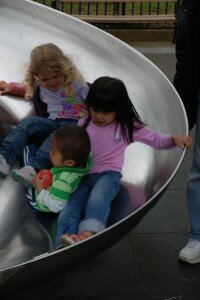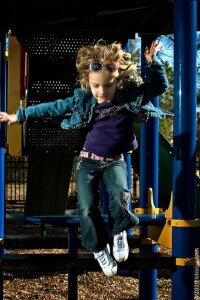Category Archives: Uncategorized
Students as “Information Flaneurs”

School structure can easily be described as containers of time, space… content, standards…accountability. This is the reality of today’s education system. How does this fit with the real world need for developing entrepreneurship, creativity, and invention? Can these skills—habits of mind—be developed within the confines of our current school structure? Where does discovery, through the process of inquiry, come in to play?
We ultimately need novel ways to support the practices embodied by the information flaneur in curiously and critically moving through information landscapes and creatively constructing meaning.
This conclusion is from the research paper by Marian D¨ork, Sheelagh Carpendale and Carey Williamson, The Information Flaneur: A Fresh Look at Information Seeking, addressing the need to develop technology tools and landscapes to benefit information seekers. It has me thinking about different structures – the structures of education. I believe we ultimately need novel ways to support students so they can have the heady experience of serendipitously encountering just the right piece of information to help them understand or make sense of something– like finally seeing how puzzle pieces will fall into place, and suddenly being able to see the big picture. Students need to have the time and space to “curiously and critically move through information landscapes and creatively construct meaning.”
It seems that time is the greatest enemy –how can teachers possibly give up precious classroom time for this kind of free-style inquiry? There is content to cover, tests to prepare for, grades to be doled out.
 But inquiry is at the heart of learning. Can true inquiry be contained? Within the boundaries of our education system , inquiry does occur, but tends to be highly structured, with little room for choice, free exploration, and sense-making.
But inquiry is at the heart of learning. Can true inquiry be contained? Within the boundaries of our education system , inquiry does occur, but tends to be highly structured, with little room for choice, free exploration, and sense-making.
Perhaps a first step is to allow students the opportunity to curate information. By curate, I mean more than collecting, but synthesizing, discarding what doesn’t fit as our understanding shifts and grows, creating context, and sharing with a broad audience (More on curating here) Even within our highly structured environments, we need to carve out time and space for students to truly explore, possibly find that spark of curiosity to dig deeper, make connections, and ultimately take ownership of their learning.
Inspired by post (discovered via Robin Good on Scoop It): Collections As Landscapes: Part 1: Empowering Spatial, Experiential Interaction , which linked to The Information Flaneur: A Fresh Look at Information Seeking by Marian D¨ork, Sheelagh Carpendale and Carey Williamson
Developing Future Workskills Through Content Curation
I will be presenting an ISTE Ignite Session on Monday, June 24 at 8:30 am on “Students as Curators.” Hope you can make it! -Nancy
The response to my previous post on Understanding Content Curation has been incredible. This definitely is a topic people are  passionate about. Perhaps part of the reason for this is the tools and technology available provides an easy pathway to curate and follow our individual learning passions. This has me thinking more about the role content curation can play for students in inspiring passion-based learning, moving towards personalized learning and of the many skills and habits of mind that students can develop through the process.
passionate about. Perhaps part of the reason for this is the tools and technology available provides an easy pathway to curate and follow our individual learning passions. This has me thinking more about the role content curation can play for students in inspiring passion-based learning, moving towards personalized learning and of the many skills and habits of mind that students can develop through the process.
I have enjoyed exploring the many links and sources that were shared via Scoop-It, Pinterests, blogs, and other connections to my post. My own learning and understanding increased tremendously through the process of exploring these. Imagine what this kind of networked learning might do for students?
 One link in particular has helped move my thinking forward regarding the benefits for students who curate: the Apollo Research Institute Future Workskills 2020 study conducted last year that identifies critical workforce skills that our students will need to be prepared for future jobs.
One link in particular has helped move my thinking forward regarding the benefits for students who curate: the Apollo Research Institute Future Workskills 2020 study conducted last year that identifies critical workforce skills that our students will need to be prepared for future jobs.
A closer look suggests that critical workforce skills identified in this \ study can be easily aligned with the skills practiced with content curation.
The skills a student employs to successfully curate information include curiosity, media literacy, ability to make connections across disciplines, information literacy, the ability to evaluate and understand perspective, synthesize and evaluate information, and a good dose of self-direction. Here is how they line up with the 10 skills identified in this study.

Sensemaking “ability to determine the deeper meaning or significance of what is being expressed”
This goes beyond simple definitions to imply an insatiable curiosity or sense of wonder about something. For this affliction, curating is “the cure.” Curating is in one sense a quest to understand something – and then to share it –or teach it to others.
 Computational Thinking “ability to translate vast amounts of data into abstract concepts and to understand data-based reasoning”
Computational Thinking “ability to translate vast amounts of data into abstract concepts and to understand data-based reasoning”
At its heart, curation requires information literacy: analyzing and organizing data in the pursuit of understanding. An excellent breaks apart the skills used in computational thinking to include decomposition, pattern recognition, pattern generalization and abstraction, and algorithm design. These same skills are applied in the curation process as we strive to make sense of our topic for ourselves and others.
New media literacy “ability to critically assess and develop content that uses new media forms, and to leverage these media for persuasive communication”
A distinguishing factor of content curation is synthesis and evaluation of information and of course this information comes from multiple digital media forms, such as blogs, wikis, and video. While content curation doesn’t necessarily involve taking this to a next step of purposefully developing persuasive communication, the act of sharing the curated content can certainly have this end result.
Transdisciplinarity “literacy in and ability to understand concepts across multiple disciplines”
A natural part of the content curation process is to begin making connections across disciplines. A perfect example of this for me has been my exercise in curating resources about content curation. While I hoped to define this process for education, this was aided tremendously through the influence of people who curate content in the field of marketing. The incredible curation tools and social networks available on the web make it possible to easily connect with people and ideas across disciplines, and increase the speed and ability to reach understanding.
Cognitive load management “ability to discriminate and filter information for importance, and to understand how to maximize cognitive functioning using a variety of tools and techniques”
This skill is synonymous to content curation. As the amount of information and data continues to grow, this skill becomes essential to future success. We must be able to sort, sift, and make sense of information and data in an effective and efficient way. The American Association of School Libraries in Standards for the 21st Century Learner describes self-direction under Standard 1, “Inquire, think critically and gain knowledge” as “making independent choices in the selection of resources and information.” The key word is “independent.” If students are spoon-fed resources for cookie-cutter research projects, they will not be practicing self-direction and will not be able to develop the vast array of skills outlined here through the process of content curation.
Social Intelligence “ability to connect to others in a deep and direct way, to sense and stimulate reactions and desired interactions”
I see this skill evolving from curating and sharing content – as communities of learners form who have a common interest. The curated content serves as the impetus. This is further enriched through people joining these communities from different disciplines and schools of thought.
Novel and adaptive thinking “proficiency at thinking and coming up with solutions and responses beyond that which is rote or rule-based”
This is a direct outcome of the process of curation – the higher order thinking skills of synthesis and evaluation imply that the end result will be novel and adaptive thinking.
 Design mindset “ability to represent and develop tasks and work processes for desired outcomes”
Design mindset “ability to represent and develop tasks and work processes for desired outcomes”
Content Curation requires a design mindset — evident in the way this is described in the design and personal development blog of Ash Menon, graphic and web designer.
“A design mindset is a way of thinking that continuously evolves, changes, and adapts. It is based on a series of principles most commonly found and practiced in the design industry:
1) Practicing a methodology that involves identifying the problem, issue, or question at hand, and approaching it from various perspectives.
2) Allowing any idea, regardless of quality, to appear on the table before it is judged.
3) Taking risks with approaches and solutions that have never been applied or attempted before.
4) Continuously striving to improve upon a current situation or condition, in an endless cycle.”
I love this statement in thinking about content curation: “If you can’t see, try changing glasses.”
Cross cultural competency “ability to operate in different cultural settings”
Tools available today for curating content and the social networks that connect us to information shared globally make it easy to learn in different cultural settings. With curating content that is shared through social media, your global network grows and with that growth comes the ability to gain perspective and global understanding.
Virtual collaboration “ability to work productively, drive engagement, and demonstrate presence as a member of a  virtual team.”
virtual team.”
While this is not a requirement for content curation, certainly the tools available to engage in this task facilitate virtual collaboration and sharing of ideas, knowledge, and understandings in ways that have never been possible previously. I’ve lost count of the number of people from other countries that have visited my blog, and “re-scooped” and commented on my curated resources. What a powerful thing this would be for students to make contact with people who have interests demonstrated through curating on a similar topic!
Future Workskills 2020 suggests a monumental shift and change needs to begin now in our education system. These skills can be developed through the process of content curation. Content curation has the added benefit of helping students find their passions for and take ownership of their learning. Just one question remains. How will you incorporate content curation as a powerful learning strategy for your students?
The Potential of Technology to Transform Education
 Educational technology has the potential to transform this country’s education system in powerful ways, to better prepare students for living and working in a world that demands a different skill set from that which our current education system was designed to offer. Curriculum designed to be delivered to every student in the same way at the same time may have been a successful way to prepare the future generation of workers in the 20th century, when many would work in jobs requiring a narrow set of skills and knowledge, but today’s workforce requires students be able to collaborate, problem solve, communicate, navigate, synthesize and create with information that is multiplying exponentially on a daily basis. Technology not only allows students to practice these skills in a relevant way to prepare them for the future, it allows them to learn on their
Educational technology has the potential to transform this country’s education system in powerful ways, to better prepare students for living and working in a world that demands a different skill set from that which our current education system was designed to offer. Curriculum designed to be delivered to every student in the same way at the same time may have been a successful way to prepare the future generation of workers in the 20th century, when many would work in jobs requiring a narrow set of skills and knowledge, but today’s workforce requires students be able to collaborate, problem solve, communicate, navigate, synthesize and create with information that is multiplying exponentially on a daily basis. Technology not only allows students to practice these skills in a relevant way to prepare them for the future, it allows them to learn on their
own terms –what they want, where they want, and when they want. of Educational technology has the potential to transform teaching and learning as we know it through this anytime, anywhere learning — what is currently being labeled “Personalized Learning.”
Personalized learning might incorporate some blended learning strategies, or be fully online. It might involve technology in the learning, or the communication of the learning, especially when that learning happens outside of the classroom. However, technology is not the focal point of the learning. With the concept of personalized learning, we are on the brink of realizing our vision of how educational technology can transform education, because this strategy does not merely supplant a 20th century teaching practice with a “cool tool.”
It changes the very face of what education looks like. It allows ownership of the learning to be transferred to the student.
How do we get there? For fundamental change to occur, changes in policy at the state and national level are essential. Relief from seat-time
policy at the state and national level are essential. Relief from seat-time
requirements , otherwise known as the “Carnegie Unit” would allow schools to shift to a more meaningful method of learning and assessing students on progress towards mastery of standards. This would also allow students to progress through learning at a pace that best meets their learning needs and styles. A natural extension of this would be to discontinue grouping students by ages and grade levels and instead group them according to their level obtained toward mastery. An additional element that will pave the way for personalized learning would be to allow students to receive credit for learning that happens outside of the classroom walls. If a student volunteers at a science center, writes for the local newspaper, designs displays for a local history museum, or participates on a gymnastics team, and can prove their mastery of the required content standards through these activities to their teacher -coach, then they should not have to “put in time” in a classroom and pass low-level assessments to obtain credit towards graduation. In this system, standardized tests given by grade level would make no sense. Performance assessments designed to rate a student’s progress towards mastery of content and skills should be put in place. In an education system where students own the learning, the purpose of the assessments would be for students, with guidance from their teacher-coach, to see how they are progressing and to make choices about how to best move forward to master the content and/or skill. Electronic portfolios become a way to show mastery –another technology-enabled
system.
 At all levels, it is critical for school leaders to adopt a shared vision of learning transformed by technology so that the potential of educational technology can be realized. Even before state and national policy shift to make room for personalized learning, there are things our school and district leadership can do. The world is changing rapidly by technology, and school leaders have an obligation to model its use. We must tap in to the professional learning networks available through social media to really understand how our students communicate, learn and grow in today’s information-based society, and tap in to the richness of ideas and understandings that are exchanged there. Through these educational learning networks available on , , and through
At all levels, it is critical for school leaders to adopt a shared vision of learning transformed by technology so that the potential of educational technology can be realized. Even before state and national policy shift to make room for personalized learning, there are things our school and district leadership can do. The world is changing rapidly by technology, and school leaders have an obligation to model its use. We must tap in to the professional learning networks available through social media to really understand how our students communicate, learn and grow in today’s information-based society, and tap in to the richness of ideas and understandings that are exchanged there. Through these educational learning networks available on , , and through
professional organizations such as ASCD and Edutopia, educational leaders discuss and shape a vision for education transformed through the power of technology.
An area that seems daunting in today’s economy, but may just require some creative thinking on the part of the school and district leadership is to examine the budget to see how funding can shift from support of 20th century teaching practices to allow for large scale deployment of technology to provide equitable access for every student. This deployment absolutely must include budget to address professional development for all teachers to meet them where they are with their understanding of transforming daily teaching practice through technology to realize the school and district vision. Currently, most school districts invest large amounts of money in print textbooks, which in many cases become obsolete before they can be replaced. While etextbooks are one possible solution, perhaps a larger shift in curriculum design and delivery, which could involve re-thinking the teacher role as personalized learning and school structure begin to evolve would be for teachers to curate resources that support the standards-based, backwards planned units they create for students. This shift to teacher created curriculum has the potential to free up limited school and district funds currently going to purchase curriculum and textbooks to support the time teachers invest in creating these resources and learning units, as well as the technology used in the delivery. The benefits would be curriculum tailored to meet the needs of students. Eventually, as students develop information literacy skills, they might assume some of the responsibility for curating information to
achieve the learning objectives and master the content standards themselves. This will further shift
ownership of the learning from the teacher (as well as school and district) to the student. 
This education transformation will not happen overnight. However, for the sake of our students, the future of learning, and
all of the things that education impacts in a community, state, and nation, the process needs to begin now. People at all levels of the education spectrum need to develop a unified vision and begin the process of implementing whatever they can do within their realm of influence. The clock is ticking. Twenty-first century learning is about more than replacing a 20th century teaching practice with a piece of technology. We are now over a decade into this century. It’s time to get busy.
Personalized Learning a Path to Innovation?
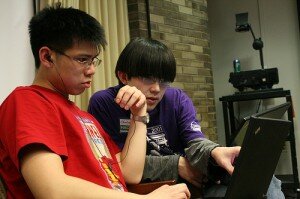 Jonah Lehrer posed an interesting question in the article “Cultivating Genius” in Wired this month (March, 2012):
Jonah Lehrer posed an interesting question in the article “Cultivating Genius” in Wired this month (March, 2012):
“How can we increase the pace of innovation?”
In examining some of the hotbeds of innovation and talent over the centuries – Athens between 440 and 380 BC, and Florence between 1440 and 1490 for example, he posits that it is not just coincidence that so many new ideas, innovations and artistic masterpieces arose from these locations in these short periods of time. One element he identifies as having a significant influence is education.
“All of these flourishing cultures pioneered new forms of teaching and learning. Medieval
Florence saw the rise of the apprentice-master model, which let young artists
learn from veteran experts. Elizabethan England made a concerted effort to
educate its middle-class males.”
Fast forward to early 21st century America, and consider what new forms of teaching and learning have the potential to create the same kind of innovation surge. I believe that Personalized Learning, especially when enabled through access to technology communication tools and robust networks has this potential.
At the Model Schools Conference in 2010, I was able to hear about New Hampshire’s bold educational reform efforts. The state board of education eliminated seat time – imagine – the demise of the Carnegie Unit! But that is not all. They also made it possible for students to earn credit for work that they do outside of the classroom. So, if a student is a gymnast, for instance, they may not need to take a PE class if they can offer proof to a teacher-coach that they achieved mastery on the required standards. Or, if a student volunteers at the local science museum, they could earn credit in a similar manner. Or – if they work as an intern with professionals in various fields, there would be more opportunities to earn credit . The final piece of this reform package was to switch to standards-based grading. Our presenter estimated that within 5 years, schools would begin to look very different as a result of these changes. Students wouldn’t be grouped by age, and not all would be in school every day. Teachers would shift more into the role of coaches.
To me, this is the power of personalized learning. Students learn what they want, when they want, how they want. The school district and state would still guide student learning through the standards, but the path to mastery would look different for every child.
Could this be the impetus for a “hotbed of innovation” in the future, as change takes hold? What do you think?
Why Digital Textbooks Won’t Transform Education
 The Obama administration on Wednesday announced that schools should Ostensibly, this is about more than just making sure carrying around 50 or more pounds of textbooks every day won’t cause them permanent bodily damage. As Karon Cator, director of the Education Department’s office of education technology, states:
The Obama administration on Wednesday announced that schools should Ostensibly, this is about more than just making sure carrying around 50 or more pounds of textbooks every day won’t cause them permanent bodily damage. As Karon Cator, director of the Education Department’s office of education technology, states:
“We’re not talking about the print-based textbook now being digital. We’re talking about a much more robust and interactive and engaging environment to support learning.”
So, the reason behind the challenge coming from the Department of Education seems to be that they believe etextbooks hold the power to engage our students and will help them learn more – and perhaps remember more. Hmmm. I don’t believe what we currently know about how the brain works would support this theory.
I’ve been doing a lot of thinking about this, ever since Apple made its big announcement about their new iBooks, their partnership with the Big 3 textbook companies to deliver these kind of “interactive” textbooks and the new iAuthor MAC app where anyone can create their own interactive textbook. I have to admit, I got caught up in the excitement of the moment initially thinking it could transform education as we know it. I seriously love my iPad, and seldom go anywhere without it. But, I don’t use it much to read, truth be told. I use it to interact, create, and collaborate. I collect ideas, photos, sounds, and organize them to share with others. I browse and share the news (my news – through Zite), I play Words with Friends, I chat with friends (Twitter & Facebook), I research at a point of need, curate that information, and I check email. Ironically, the most recent book I downloaded on my iPad was Nicholas Carr’s The Shallows, and I can’t seem to make my way to the end of the book. I have also downloaded the very cool, free Life on Earth textbook in my new and improved iBooks app, but haven’t been motivated to explore it much beyond my first browsing experience. So –for me, someone who could readily be called addicted to learning, reading on a device that offers so many more appealing ways to learn is difficult, at best. And while I am a “digital immigrant,” I suspect that most of today’s students would agree with me on this point. I want to learn what I want, when I want, and how I want. The iPad makes this possible.
Another point that makes me think that etextbooks – no matter how cool they are – will not transform education, is, as my friend Mary Johnson says, a textbook is a textbook. Cator declares these new textbooks are interactive. So what? Manipulating a graphic, watching a video, or answering embedded questions that simply require recall level thinking are not going to assure students learn more or better. Research on how the brain works tells us that it is the active use of the information in new situations that strengthens neural pathways. (I highly recommend Judy Willis’ work on learning & the brain – check out some of her work here – also Eric Jensen’s work – check out his blog here. ) While brain-based learning does support some of the elements that these multimedia etextbooks can bring to the table, there are too many other necessary elements to learning that they will not deliver any more than a 5-pound print textbook will.
And – if you are thinking Apple’s new $14.99 textbook price will be more economical in the long run –even with the price of the iPad, think again. In a meeting with our Apple sales rep this week, we learned that the etextbooks they are offering are essentially consumables. School districts will be given a code for the download of the textbook. However, institutions (i.e. school districts) are not permitted to redeem those codes. Only individuals can do this from their personal iTunes accounts. So –students will own the textbooks forever and ever –not the school districts. If you currently keep textbooks for 5 years, under Apple’s rules, you will have to buy a new set every year – bringing the net expense to about $75 per book ($15 x 5) – plus the price of the iPad.
I do believe devices such as iPads that allow for anytime, anywhere learning have great potential to transform education – but the etextbook part of that – not so much. Students need to be engaged in active learning, problem solving, creating, and sharing. eTextbooks just aren’t an essential part of the equation.
Playgrounds and Social Media
I’ve been thinking about the similarities between playgrounds and social media lately. As the school year is launching, I am thinking of ways that we can continue to enlighten our communities about the need to help students navigate the world of social media in a safe environment, part of helping them along the road to becoming good digital citizens. For some reason, my thinking keeps coming back to playgrounds.
Children love the freedom of playgrounds. They can explore, challenge themselves, and make new friends. From an early age, parents take their children to playgrounds to run and play, teaching them how the various equipment works, and give them safety tips, always keeping a watchful eye to make sure they don’t get too rambunctious lest they forget about the safe way to climb, swing, and spin. We encourage them to make friends, and play nicely. Yes, there are inherent risks, but parents, and indeed school staff and volunteers on school playgrounds are there to remind the children if they are straying too far into an “unsafe” zone or using inappropriate behavior. As children get older, we relax a little bit, trusting that children have learned the rules of the playground, and will self-monitor. On very large playgrounds, where large numbers of children play, such as a school playground, we recognize that it is impossible to monitor every child at every moment. Children interact with each other and explore all that the playground has to offer. They test themselves both physically and socially. This is a learning process.
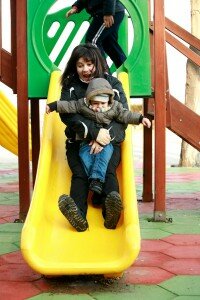
Posted Under Creative Commons. Photo by Tasslehoff Burfoot.
We recognize risk exists here, yet we do not close down the playgrounds, or block children from accessing them. Adults are very much involved in the process of teaching children to play safely, and we monitor them along the way. We recognize this as a part of growing up, and indeed we do, little by little, turn over responsibility for safe and appropriate behavior in such a setting to the children. If a child oversteps the boundaries that are set for safety, if bullying takes place, or any other inappropriate social behavior, there are consequences. But the goal is to ultimately teach them how to be safe and appropriate so they can self-monitor and enjoy all that the playground has to offer in the future. If a child misbehaves on the playground, we do not take away access to the playground for the whole community or school. That doesn’t make sense. We deal with the individual child who acted inappropriately.
Social media is a kind of playground – but one that is much less familiar to most adults. As my colleague Linda Conway has observed, kids started participating in social media far before adults went there, and they made their own rules. No one taught them appropriate and safe behavior along the way, and no one monitored them in this environment. I use the past tense here, because I think that we are beginning to see a shift in this now, but we still have a lot of catching up to do. Social media has so much to offer our students in terms of making global connections and learning from people that they never would have had the opportunity to interact with prior to this technology. But our children are largely still unaware of what appropriate behavior looks like in this environment, especially if they use the model of the children who played without rules before them. Just like on a playground, we need to show them how to be safe and appropriate – and much of this might be by modeling it ourselves. We have a responsibility to do this for them, so we need to be there with them, and show them how to use social media to effectively communicate and learn. We need to use it in our schools, as well as at home. School districts should explore how they can provide the necessary guidance and training for students in the appropriate use of social media within a safe environment. Like it or not, social media is here to stay, and kids want to be a part of it. They will find a way. So let’s explore it together, in a safe environment, and set some boundaries. Let’s use it to help them learn.
The First Day
 Tomorrow a new school year begins. Students and teachers alike are full of anticipation, excitement, and hope. The schools have been thoroughly cleaned, supplies have been re-stocked, textbooks are ready to be distributed, and computers powered up and made ready. The library media center is neatly organized and ready for students in search of good stories and information. Teachers and staff have been busy planning for The First Day. Bulletin Boards have been put up, class lists are printed out, and lesson plans drafted. The business of learning is about to begin in full force.
Tomorrow a new school year begins. Students and teachers alike are full of anticipation, excitement, and hope. The schools have been thoroughly cleaned, supplies have been re-stocked, textbooks are ready to be distributed, and computers powered up and made ready. The library media center is neatly organized and ready for students in search of good stories and information. Teachers and staff have been busy planning for The First Day. Bulletin Boards have been put up, class lists are printed out, and lesson plans drafted. The business of learning is about to begin in full force.
At some point during the day, all of us – students, teachers, parents, and administrators should step back and take a good look around. How can you capture the spirit and hope of this very special day?
I wonder what it is, in particular, that makes this day so special? Is it the new supplies? The excitement of finding out who is in your class? Is it the anticipation of learning new things? The First Day is your chance to set the stage for the coming year. What kind of place will your classroom be?
I wish all of you a beautiful First Day – full of wonder!
Envisioning An Innovative Learning Specialist
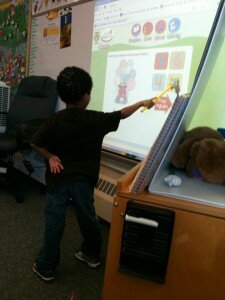 In our district, we are fortunate to have both certified technology teachers and teacher-librarians in many of our schools. Our department is currently brainstorming ways to maximize these positions to better assure that all students obtain 21st century skills. My task was to write a vision of what the certified technology teacher position might evolve in to – beyond teaching isolated technology skills on a fixed schedule. This could be applied in all school levels. What do you think? What would you add or change?
In our district, we are fortunate to have both certified technology teachers and teacher-librarians in many of our schools. Our department is currently brainstorming ways to maximize these positions to better assure that all students obtain 21st century skills. My task was to write a vision of what the certified technology teacher position might evolve in to – beyond teaching isolated technology skills on a fixed schedule. This could be applied in all school levels. What do you think? What would you add or change?
The Innovative Learning Specialist or Coach is responsible for helping teachers to seamlessly integrate technology and other strategies into their daily teaching practice in order to boost students’ 21st century skills. The goal is to transfer responsibility for technology tool instruction to the classroom teacher (and in many cases, to the students) so that the ILS time can be spent collaborating to plan, co-teach, and co-assess students’ 21st century skills through standards-based inquiry-driven units of learning.
Through systemic collaboration with all classroom teachers, using a backwards design model, the ILS brainstorms and plans with teachers how to build learning experiences that are standards driven, yet also give students opportunities to regularly use technology, when appropriate, and practice 21st century skills. The ILS works in concert with the certified teacher-librarian and often they collaborate as a team with teachers. Together, they may collaborate with teachers to co-plan units that are driven by overarching essential questions and enduring understandings that cross multiple content areas, including “specials” such as art, music, PE and world languages. The units are inquiry-driven, project-based and are relevant to students. The ILS, with the teacher-librarian, track student progress on mastering 21st century skills through formative assessments, which are given equal weight to content standards.
The ILS has a flexible schedule, allowing him/her to plan and co-teach longer units as needed, when needed. With administrator support, the ILS will assure that every student has an opportunity to participate in these rich standards-based units. The expectation will be that every teacher will collaborate with the ILS on a regular basis throughout the school year. The teaching and learning occurs in the classroom or library “learning commons.” Wireless laptops, netbooks, iPads,tablets, iPod Touches, and/or other personal digital devices are used by students.
A large part of the ILS responsibility will be to deliver professional development to staff in a differentiated manner to assure every teacher has the technology skills needed to successfully facilitate learning through technology when the ILS is not available. The ILS will stay current with the latest technologies – hardware, software, and web tools- through participation in a professional learning network, and will routinely share new technologies and strategies with the staff through modeling and direct instruction. As the teacher’s skills with technology grow, the ILS will be able to shift more and more to the role of a collaborative coach and instructional design partner. The ILS, with the teacher-librarian, will co-chair the school’s 21st Century Learning Committee. (formerly known as the technology committee and Educational Technology-Information Literacy – ET-IL committee) Together, they will assure that all technology purchases support the school’s learning goals, and the committee is guided by student learning needs rather than focused on the tools.

